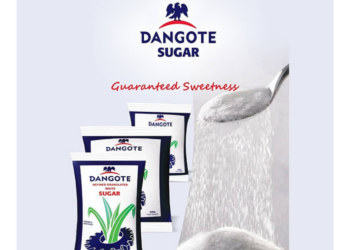There have been debates among consumers regarding what brand of sugar leads the pack in terms of quality and value for money. To the unacquainted user, all table sugar is sugar, without any distinguishing factor, since they all take the form of white shiny crystalline grains. But this is a little off from reality.
All sugars are not created equal. The product distinction starts from its primary raw material and ends in its application. Depending on such applications, some perform better, or are more beneficial than others.
How they make their sugar
Sugar can be made from two main raw materials. Cane sugar (or sugar cane), and beet sugar (a variant of the beet root plant). To an extent, this is where the two of the well-known brands in Nigeria – St Louis Sugar and Dangote Sugar– differ.

Source: Online
Cane sugar is a grass that stores sugar in its stalk. It grows mostly in tropical or warm countries. Being a grass, it grows above the ground and is exposed to sunlight and fresh air.
Sugar beet, on the other hand, is a root plant, meaning that it grows deep under the ground, and in the dark. Its root is fleshy and rich in saccharose, containing an average of 16% to 20% natural sugar. It grows mostly in cold regions like Europe.

Source: Dangote Sugar Plc
Thus, the raw material used to obtain the final product depends on the location of the manufacturer, and its proximity to the raw material source.
Cane vs Beet
- European manufacturers mostly utilize beet in the production of sugar for two main reasons: Beet is more readily available in large quantities on the continent because of the climate, and is very cheap.
- Secondly, the use of cane sugar is discouraged in Europe through the imposition of tariffs on its importation, while the use of sugar beets is promoted in order to protect its own farmers and local industry.
- However, a specific quota of cane sugar imports from strictly developing countries is allowed duty-free into the EU (to encourage developing countries), allowing producers such as Saint Louis Sucre to import cane sugar for the manufacture of cane sugar products.
But due to the EU’s Sugar policy, cane sugar producers are having a tough time. Saint Louis Sucre, in 2015, planned to cut down on its cane refining operations due to the uncompetitive nature of cane compared to beet. Cane is refined in 2 processes, while beet requires only 1 process.
Market consumption
Beet is used in about 80-85% of European sugars, while cane sugar accounts for the remaining 15-20%. On the contrary, globally, sugarcane accounts for 80% of the sugar produced in the world; the majority of the remaining 20% is made from sugar beet.
The implication of this is that the widely popular St Louis sugar, which is made in France but imported into Nigeria by the Milan group, and Indian family business, is very likely made from sugar beets, while Dangote sugar, as well as the other local brands, are made from cane sugar. Dangote Sugar owns cane sugar plantations through its subsidiary Savannah Sugar in Kogi state, as does BUA.
Does this have any implication on the quality of the final product?
To most retail users who use sugar to sweeten their foods and liquids, there isn’t a detectable difference. It is for this segment of users that the saying “all sugar is sugar” applies.
Due to this undetectable difference, most beet sugar producers do not attempt to label the product to say if it is made from beet or cane. But most cane producers would proudly say that their product is made from cane because it takes more effort to refine cane sugar.
In fact, it is said that if a bag or box of sugar is not labeled “pure cane sugar” or “100% cane sugar”, then you are probably buying a product that contains beet sugar.
However, for those that use sugar for cooking, baking pastries and confectionaries and for other culinary uses, an important distinction exists, which makes a very significant difference in the quality of their final product.
One of the differences between the two products for this set of users is that cane caramelizes (turns to caramel) very beautifully, while beet burns and turns blackish. Also, products made from beet, end up having coarse texture, while cane products smooth and spongy. Generally, it is said that confectionary products made with cane sugar are superior to those made with beet sugar.
It’s all down to the money
For the retail user, it all comes down to the value for money option. Since most people can’t distinguish between the difference, they may rely on the size of their pockets when choosing a brand. Nigeria discriminates against imported refined sugar in order to boost its local production in Nigeria. Imported refined sugar faces a 35% tariff while raw sugar to be refined locally faces a 5% tariff. Local refiners also get a 5-year tax break. This makes local brands more affordable and ultimately more demanded than the imported alternatives. Currently, a 500-gram pack of St Louis Sugar sells for N370, while a similar pack for Dangote sugar sells for N250.
The proportion of beet in Nigeria’s market right now is not as large as cane. However, this might be set change this year, when an embargo on European sugar exports is lifted in October.
Beet sugar is cheaper, and given the proximity of Europe to West Africa, it might make more financial sense for refiners to start using beet – that is, ignoring any technological hurdles. Also, depending on whether government ban stay up, we may increasingly see the influx of beet sugars.























See i didnt know all these. So St Loius isnt even manufactured in Nigeria. Wawwuuuu!!!
Thanks Yekini. Indeed enlightening.
insightful. thank you
GREAT INFO. I’VE LEARNT A LOT. BEFORE NOW, I THOUGHT THAT COMMERCIAL SUGAR WAS MADE ONLY FROM SUGAR CANE. THANKS A LOT FOR THIS WRITE-UP. MAY GOD BLESS YOU IN JESUS NAME, AMEN.
Great info ! Thanks 🙏🏿